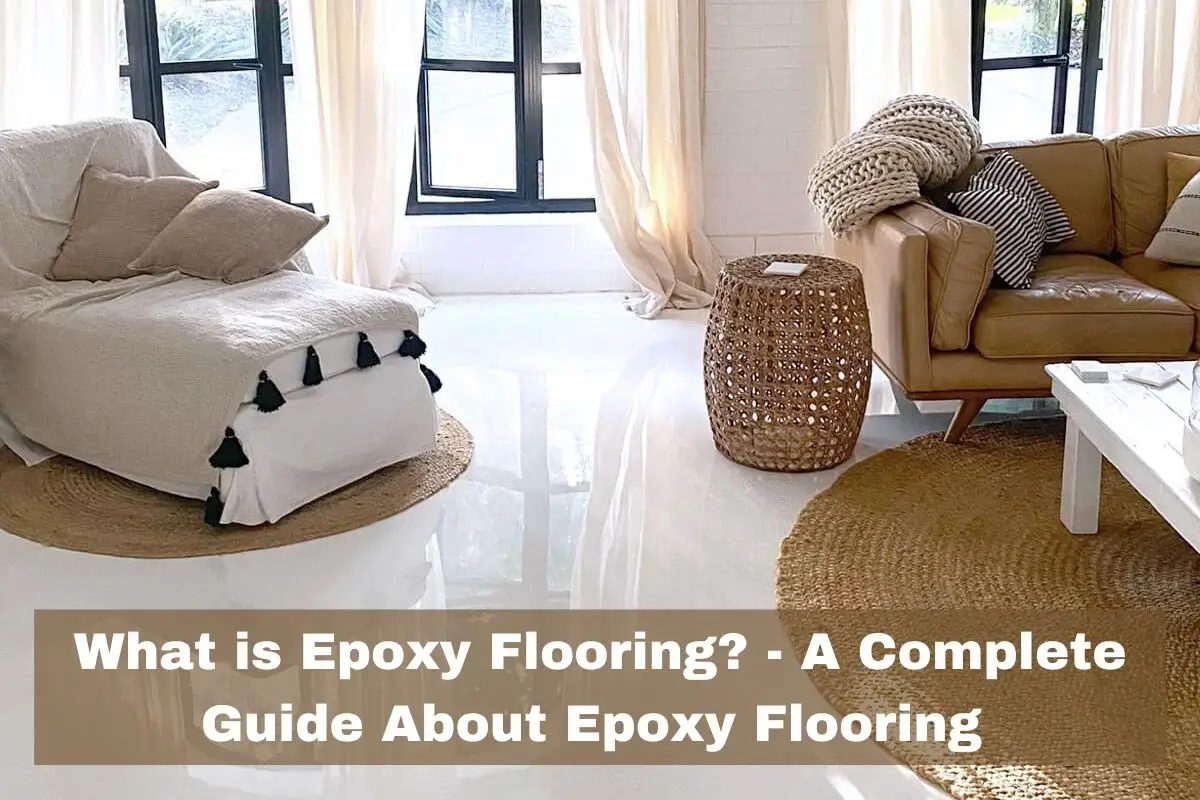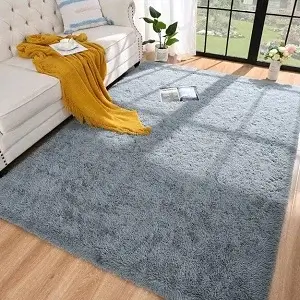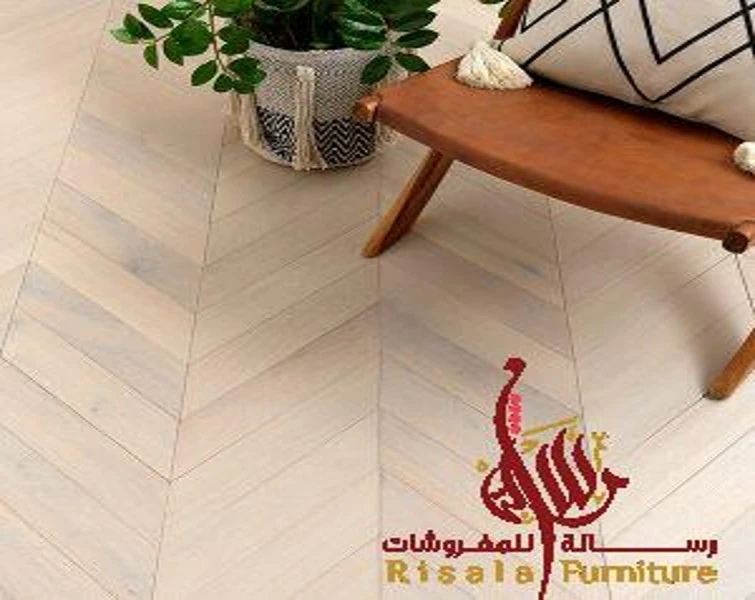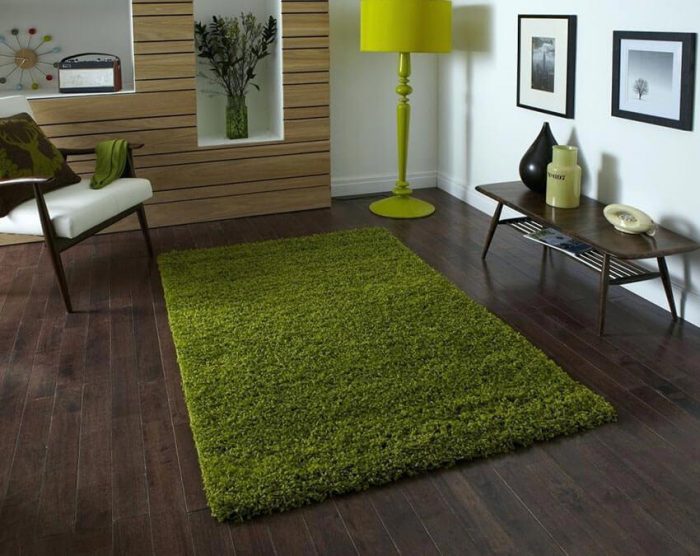

Epoxy flooring has emerged as a transformative solution in the realm of interior and exterior surface finishes, offering a unique blend of durability, aesthetics, and versatility. In recent years, its popularity has skyrocketed, captivating the attention of homeowners, business proprietors, and designers alike. This innovative flooring option goes beyond the conventional, bringing forth a spectrum of possibilities in terms of design, resilience, and ease of maintenance.
At its core, epoxy flooring is a polymer-based material that, when applied to surfaces, forms a hard, glossy finish. This blog aims to unravel the mysteries surrounding epoxy flooring, delving into its various types, the distinct advantages it brings to the table, and potential drawbacks one might encounter. From exploring its compatibility with different surfaces like wood and tiles to addressing common queries about its applications in bathrooms and outdoor spaces, this comprehensive guide aims to be a beacon for those seeking clarity on the epoxy flooring phenomenon.
Whether you’re contemplating a home renovation, a commercial space upgrade, or simply curious about the latest trends in flooring solutions, join us on this journey to understand “What is Epoxy Flooring?” and unlock the potential it holds for transforming spaces with resilience and style
Types of Epoxy Flooring
Epoxy flooring, a versatile and resilient solution, comes in various types, each tailored to meet specific needs and preferences. Understanding these types allows individuals to make informed decisions when considering epoxy for their flooring needs. Here are some common types of epoxy flooring:
- Self-Levelling Epoxy:
Ideal for creating a smooth and seamless surface, self-levelling epoxy is commonly used to correct uneven floors. It provides a glossy, even finish and is often chosen for commercial and industrial spaces.
- Mortar Epoxy:
Known for its exceptional thickness and strength, mortar epoxy is a robust option suitable for areas with heavy machinery or high impact. It consists of a mixture of epoxy and graded sand or quartz for added durability.
- Gravelled Epoxy:
Incorporating decorative aggregates like colored quartz or vinyl chips, gravelled epoxy is a popular choice for areas requiring both aesthetics and slip resistance. It adds texture to the flooring while maintaining durability.
- Terrazzo Epoxy:
A fusion of epoxy resin and a mix of decorative materials such as marble, glass, or granite chips, terrazzo epoxy creates a visually stunning and highly customizable flooring option. It’s appreciated for its unique patterns and durability.
- Anti Static Epoxy:
Specifically designed for environments sensitive to electrostatic discharge, antistatic epoxy helps control static electricity. Commonly used in laboratories, clean rooms, and electronics manufacturing facilities.
- Vapour Barrier Epoxy:
This type of epoxy flooring serves as a protective barrier against moisture and vapour transmission. Vapour barrier epoxy is crucial in spaces where moisture control is essential, such as basements and areas prone to dampness.
- Epoxy Terracotta Flooring:
Mimicking the warm and earthy tones of terracotta tiles, this type of epoxy flooring provides a cost-effective and durable alternative. It combines the aesthetic appeal of terracotta with the strength of epoxy.
- Metallic Epoxy:
Offering a stunning, three-dimensional effect with a metallic finish, this type of epoxy flooring is popular for creating visually dynamic and artistic surfaces. It’s often used in retail spaces, showrooms, and residential settings.


Advantages of Epoxy Flooring
Epoxy flooring has gained widespread acclaim for its remarkable combination of durability, versatility, and aesthetic appeal. Whether applied in residential, commercial, or industrial settings, epoxy flooring offers a multitude of advantages that make it a compelling choice for a variety of applications. Here are some key benefits:
- Exceptional Durability:
Epoxy flooring is renowned for its outstanding durability and resistance to heavy foot traffic, impact, and abrasion. It forms a tough, protective surface that can withstand the rigours of daily use in high-traffic areas.
- Easy to Clean and Maintain:
The smooth and seamless surface of epoxy flooring makes it easy to clean and maintain. It resists stains, dust, and dirt, requiring minimal effort for routine cleaning. This characteristic makes it particularly suitable for spaces where cleanliness is paramount.
- Chemical Resistance:
Epoxy flooring is highly resistant to chemicals, including acids, solvents, and other corrosive substances. This resistance makes it an excellent choice for industrial and laboratory settings where exposure to chemicals is a concern.
- Aesthetic Options and Design Flexibility:
Epoxy flooring is available in a wide range of colours, patterns, and finishes. This versatility allows for creative and customizable designs, making it possible to achieve a tailored look that complements the overall aesthetic of the space.
- Seamless and Hygienic Surface:
The seamless nature of epoxy flooring eliminates joints and grout lines, reducing the risk of bacteria, mould, and other contaminants accumulating. This feature makes epoxy an ideal choice for environments where hygiene is crucial, such as healthcare facilities and food processing areas.
- Fast Installation:
Compared to many traditional flooring options, epoxy flooring can be installed relatively quickly. This is advantageous for minimising downtime in commercial and industrial settings, allowing businesses to resume operations promptly.
- Cost-Effective Long-Term Solution:
While the initial installation cost of epoxy flooring may be higher than some alternatives, its long-term cost-effectiveness is notable. The durability and low maintenance requirements contribute to lower overall costs over the lifespan of the flooring.
- Enhanced Safety Features:
Epoxy flooring can be customized to include anti-slip additives, enhancing safety in areas prone to spills or moisture. This feature is particularly valuable in industrial settings or spaces where safety is a primary concern.
- Resistant to Moisture and Stains:
Epoxy flooring provides a protective barrier against moisture, making it resistant to water damage. Additionally, its non-porous surface repels stains, ensuring a clean and presentable appearance over time.
- Environmentally Friendly Options:
Low VOC (Volatile Organic Compound) and solvent-free epoxy formulations are available, contributing to environmentally friendly flooring options. This is especially important for those seeking sustainable choices in construction and design.


Disadvantages of Epoxy Flooring
While epoxy flooring boasts numerous advantages, it’s important to consider potential drawbacks to make informed decisions when choosing flooring options. Here are some disadvantages associated with epoxy flooring:
- Initial Installation Cost:
One of the primary drawbacks of epoxy flooring is its relatively higher upfront cost compared to some traditional flooring materials. The need for professional installation and specialised equipment contributes to the initial expenses.
- Professional Installation Required:
Achieving the full benefits of epoxy flooring necessitates professional installation. DIY attempts may result in uneven application, reduced durability, and an overall less satisfactory finish.
- Susceptibility to UV Damage:
Epoxy flooring may experience discoloration and deterioration when exposed to prolonged sunlight or ultraviolet (UV) radiation. This makes it less suitable for outdoor applications or areas with extensive natural light.
- Potential for Slipperiness:
While certain epoxy formulations can be customized with anti-slip additives, the smooth, glossy surface of epoxy can become slippery, especially when wet. This aspect requires careful consideration in spaces prone to spills or moisture.
- Limited Repair Options:
Once epoxy flooring is damaged, repairs can be challenging. In the event of cracks or chips, the entire affected area may need to be recoated or, in some cases, the entire floor may need reinstallation.
- Curing Time:
Epoxy flooring requires adequate curing time, during which the space cannot be used. This can be an inconvenience, particularly in settings where uninterrupted use of the space is crucial.
- Temperature Sensitivity During Installation:
The successful installation of epoxy flooring is contingent on suitable temperature conditions. Extreme temperatures, either too hot or too cold, can affect the curing process and compromise the final finish.
- Not Ideal for Uneven Substrates:
Epoxy is best applied to smooth and even surfaces. If the substrate is uneven or damaged, additional preparation, such as grinding or patching, may be required, adding to the overall cost and complexity of the installation.
- Limited Design Changes:
Once epoxy flooring is installed, making design changes or alterations can be challenging. Unlike some other flooring options, epoxy does not lend itself well to modifications or updates without significant effort and cost.
- Vulnerability to Scratches and Abrasions:
Despite its overall durability, epoxy flooring can be susceptible to scratches and abrasions, especially in high-traffic areas or environments with heavy machinery. This may impact the aesthetic appeal over time.
Frequently Asked Questions about Epoxy Flooring?
Can Epoxy Flooring be Used on Wood?
Yes, epoxy flooring can be used on wood surfaces, providing a durable and aesthetically pleasing solution for both residential and commercial spaces. However, several factors should be taken into consideration before applying epoxy on wood:
- Condition of the Wood:
The condition of the wood substrate is crucial. The wood should be structurally sound, free from rot, decay, or significant damage. Epoxy can encapsulate the wood, providing a protective layer, but it won’t reverse existing structural issues.
- Moisture Content:
Wood tends to expand and contract with changes in humidity and moisture. It’s essential to ensure that the wood has a moisture content within the acceptable range before applying epoxy. Excessive moisture can affect the adhesion and performance of the epoxy.
- Surface Preparation:
Proper surface preparation is key to a successful epoxy application on wood. This typically involves sanding the wood to create a smooth and porous surface, promoting better adhesion of the epoxy.
- Type of Epoxy:
Choosing the right type of epoxy is crucial for wood applications. Some epoxies are specifically formulated for wood surfaces, providing flexibility and adhesion suitable for the unique characteristics of wood.
- Sealing Knots and Grains:
Wood surfaces often have knots and grains that can bleed through the epoxy over time. To prevent this, it’s advisable to seal knots and grains with an appropriate wood sealer before applying epoxy.
- Humidity and Temperature:
Epoxy should be applied in suitable environmental conditions. Ideal conditions include moderate humidity and temperature, as extreme variations can affect the curing process and the final finish on wood.
- Type of Wood:
Different types of wood have varying levels of porosity and hardness. The type of wood can influence the epoxy’s adhesion and overall performance, so it’s important to consider the specific characteristics of the wood substrate.
- Topcoat for Protection:
Applying a topcoat or sealant over the cured epoxy can provide additional protection, especially in high-traffic areas or spaces prone to abrasion. This enhances the longevity and durability of the epoxy finish on wood.
Can Epoxy Flooring be Done on Tiles?
Yes, epoxy flooring can be applied over existing tiles, offering a transformative and durable solution for surfaces in need of a refresh. This process, commonly known as epoxy tile coating or epoxy over tile, provides several advantages:
- Surface Bonding:
Epoxy has excellent adhesive properties, allowing it to bond well with tile surfaces. This ensures a strong and long-lasting adhesion, creating a seamless and resilient finish.
- Cost-Effective Upgrade:
Epoxy coating over tiles is a cost-effective alternative to replacing or removing existing tiles. It eliminates the need for extensive demolition and installation, saving both time and money.
- Versatility in Design:
Epoxy offers a wide range of design possibilities, including color choices, patterns, and even the option to create a high-gloss or matte finish. This versatility allows for a customized look that complements the overall aesthetic of the space.
- Durability and Resistance:
Epoxy provides a durable and resistant surface, protecting the underlying tiles from wear, stains, and damage. This makes it particularly suitable for high-traffic areas or spaces prone to spills.
- Seamless Appearance:
Epoxy creates a seamless surface, eliminating grout lines and joints present in traditional tiled surfaces. This not only enhances the visual appeal but also simplifies cleaning and maintenance.
- Quick Installation:
The installation of epoxy over tiles is relatively quick compared to extensive tile replacement. Minimal downtime is required, making it a convenient option for both residential and commercial settings.
- Customizable Texture:
Depending on the desired texture, epoxy coatings can be customised to provide additional slip resistance, making it suitable for areas where safety is a concern.
- Easy Maintenance:
Epoxy-coated tile surfaces are easy to clean and maintain. Regular sweeping and occasional mopping are usually sufficient to keep the floor looking pristine.
Can Epoxy Flooring be Used in the Bathroom?
Yes, epoxy flooring can be effectively used in bathrooms, providing a durable and visually appealing solution for this often challenging space. There are several considerations to keep in mind when opting for epoxy flooring in bathrooms:
- Water Resistance:
Epoxy flooring is inherently resistant to water, making it suitable for bathroom environments where moisture is prevalent. This resistance helps prevent water damage and protects the underlying substrate.
- Seamless Surface:
Epoxy creates a seamless surface without grout lines, reducing the risk of water penetration and making cleaning easier. This is especially advantageous in bathrooms where maintaining a hygienic environment is essential.
- Durability and Impact Resistance:
Epoxy is known for its durability and impact resistance. In bathrooms, where heavy items may occasionally be dropped or bumped, epoxy provides a protective and resilient surface.
- Customizable Aesthetics:
Epoxy offers a variety of design options, allowing for customised aesthetics in the bathroom. Different colours, patterns, and finishes can be chosen to complement the overall style of the space.
- Low Maintenance:
Epoxy flooring is low-maintenance, requiring minimal effort to keep clean. Regular cleaning with mild, non-abrasive cleaners is typically sufficient to maintain the pristine appearance of the bathroom floor.
- Resistance to Chemicals:
Bathrooms often involve the use of cleaning agents and personal care products. Epoxy is resistant to a variety of chemicals, ensuring that common bathroom products do not damage or degrade the flooring over time.
- Comfort Underfoot:
Epoxy flooring provides a comfortable and warm surface underfoot, enhancing the overall experience in the bathroom. This can be especially beneficial in areas where tiles might feel cold.
- Anti-Slip Options:
To enhance safety, epoxy coatings can be customised with anti-slip additives. This is particularly important in bathroom environments where the floor may be wet, reducing the risk of slips and falls.
Can Epoxy Flooring be Removed?
Yes, epoxy flooring can be removed, but the process can be labour-intensive and may require specialised tools. Here are the general steps involved in removing epoxy flooring:
- Assessment:
Evaluate the condition of the existing epoxy flooring. The removal process may vary depending on factors such as the thickness of the epoxy coating and the type of substrate.
- Protective Gear:
Wear appropriate protective gear, including safety glasses, gloves, and a dust mask, especially if using mechanical tools.
- Surface Preparation:
Use a floor grinder or shot blaster to roughen the surface of the epoxy. This helps break the bond between the epoxy and the substrate.
- Epoxy Softening Agents:
Apply epoxy softening agents or solvents to break down the epoxy. Follow the manufacturer’s instructions for the specific product being used.
- Mechanical Removal:
Use a floor scraper, chisel, or a specialized epoxy removal tool to mechanically lift and scrape off the softened epoxy. This process may require physical effort, and the effectiveness depends on the epoxy thickness.
- Grinding:
Employ a floor grinder equipped with a diamond grinding attachment to remove the epoxy layer. This method is particularly useful for thicker epoxy coatings.
- Shot Blasting:
Shot blasting is another mechanical method that involves shooting steel beads at the epoxy surface to break it up. This method is effective for large areas.
- Heat Gun:
In some cases, a heat gun can be used to soften the epoxy, making it easier to scrape or peel away. However, caution must be exercised to avoid damaging the substrate.
- Chemical Strippers:
Epoxy floor coating removers or chemical strippers can be applied to break down the epoxy. Ensure the selected product is compatible with the substrate and follow safety guidelines.
- Cleaning and Resurfacing:
After removing the epoxy, thoroughly clean the substrate to remove any residue or remaining epoxy particles. The surface may need further preparation before applying a new flooring material.
Epoxy Flooring Used Outdoors?
Yes, epoxy flooring can be used outdoors, but there are several factors to consider to ensure its successful application and longevity in outdoor environments. Here are key considerations when using epoxy flooring outdoors:
- UV Resistance:
Choose an epoxy formulation that is specifically designed to withstand UV exposure. Standard epoxy coatings may degrade when exposed to sunlight over time. UV-resistant epoxies are formulated to resist yellowing and maintain their appearance in outdoor settings.
- Weather Resistance:
Ensure that the epoxy is resistant to various weather conditions, including rain, snow, and temperature fluctuations. Outdoor epoxy coatings should be formulated to withstand the elements without compromising their structural integrity.
- Moisture Tolerance:
Outdoor environments are subject to moisture, so it’s essential to select an epoxy system that is moisture-resistant. This helps prevent issues such as bubbling or delamination.
- Non-Slip Properties:
Consider adding anti-slip additives to the epoxy to enhance traction, especially in areas prone to water exposure. This is crucial for safety in outdoor settings where surfaces may become slippery.
- Surface Preparation:
Properly prepare the outdoor surface by cleaning it thoroughly and ensuring it is free from contaminants. Surface preparation is crucial for the adhesion of the epoxy coating.
- Expansion Joints:
Outdoor surfaces are subjected to temperature variations, which can cause expansion and contraction. Incorporate expansion joints in the epoxy flooring system to accommodate these movements and prevent cracking.
- Sealing and Topcoats:
Apply a clear sealer or topcoat to the epoxy surface to provide additional protection against UV rays, moisture, and other environmental factors. This helps to maintain the appearance and durability of the epoxy flooring.
- Professional Installation:
Consider hiring a professional installer with experience in outdoor epoxy applications. Professional installation ensures proper surface preparation, application techniques, and adherence to manufacturer specifications.
- Regular Maintenance:
Implement a regular maintenance routine to keep the outdoor epoxy flooring in optimal condition. This may include cleaning, inspecting for any damage, and recoating as needed.
- Climate Considerations:
Take into account the local climate when choosing an epoxy system. Extreme temperature variations, humidity levels, and other climate factors can impact the performance of the epoxy coating.
Is Epoxy Flooring Cheaper than Tile?
The cost comparison between epoxy flooring and traditional tile largely depends on various factors, including the type of tile chosen, the complexity of the installation, and the specific requirements of the project. Here are key considerations when evaluating whether epoxy flooring is cheaper than tile:
- Material Costs:
Epoxy Flooring: While epoxy material costs can vary, epoxy is generally considered cost-effective. It is available in various formulations and can be more affordable than certain high-end tile options.
Tile Flooring: The cost of tiles varies significantly based on the material, design, and brand. Ceramic and porcelain tiles are often more budget-friendly, while natural stone or custom-designed tiles can be more expensive.
- Installation Costs:
Epoxy Flooring: Epoxy installation costs can be lower than tile installation, especially if the existing substrate is suitable for epoxy application. However, professional installation is recommended for a seamless and durable finish.
Tile Flooring: Tile installation costs can be higher, particularly if the process involves intricate patterns, custom designs, or challenging layouts. Professional tile installation is essential for achieving a polished and long-lasting result.
- Labour Costs:
Epoxy Flooring: Epoxy flooring installations may require less labour compared to tile installations, resulting in potentially lower labour costs.
Tile Flooring: Tile installation can be labor-intensive, especially for intricate designs, diagonal layouts, or mosaic patterns, which may increase labor costs.
- Preparation Costs:
Epoxy Flooring: Proper substrate preparation is crucial for epoxy application. If the existing surface is in good condition, preparation costs may be lower.
Tile Flooring: Substrate preparation for tile installation, including underlayment and leveling, can contribute to additional costs.
- Maintenance Costs:
Epoxy Flooring: Epoxy is known for its low maintenance requirements, reducing long-term costs associated with cleaning and upkeep.
Tile Flooring: Grout lines in tile floors may require more maintenance to prevent staining and ensure cleanliness, potentially leading to higher maintenance costs over time.
- Long-Term Durability:
Epoxy Flooring: Epoxy is durable and resistant to impact, chemicals, and wear, contributing to its long-term cost-effectiveness.
Tile Flooring: The durability of tile flooring depends on the type of tile chosen. While ceramic and porcelain tiles are generally durable, natural stone tiles may require more maintenance to preserve their appearance.
Epoxy Flooring Waterproof?
Yes, epoxy flooring is generally considered waterproof. Epoxy is a polymer that forms a seamless and non-porous surface when applied. This characteristic makes it resistant to water penetration, which is particularly advantageous in environments prone to moisture, such as bathrooms, kitchens, and basements. The impermeable nature of epoxy flooring helps prevent water damage, making it a suitable choice for areas where water exposure is a concern.
While epoxy itself is waterproof, it’s important to note that the effectiveness of the waterproofing can be influenced by factors such as proper installation, substrate preparation, and the type of epoxy used. Professional installation, including thorough surface preparation, ensures that the epoxy forms a durable and watertight seal, providing optimal waterproofing properties.
Conclusion
In the realm of flooring solutions, epoxy has emerged as a transformative force, captivating the interest of homeowners, business owners, and designers alike. This comprehensive guide has delved into the depths of epoxy flooring, unraveling its mysteries and exploring its diverse types, advantages, and potential drawbacks.
From self-leveling epoxy ideal for commercial spaces to the visually stunning terrazzo epoxy and the artistic allure of metallic epoxy, the array of options caters to various needs and preferences. Antistatic epoxy finds its place in sensitive environments, while vapor barrier epoxy protects against moisture, especially in basements. The terracotta epoxy offers a cost-effective alternative with a touch of warmth, and the metallic epoxy creates dynamic, three-dimensional surfaces.
The advantages of epoxy flooring are vast and contribute to its widespread acclaim. Its exceptional durability, easy maintenance, chemical resistance, and customizable design options make it a compelling choice for residential, commercial, and industrial spaces. The seamless and hygienic surface it provides is especially valuable in environments where cleanliness is paramount. The fast installation, cost-effectiveness over time, and enhanced safety features further bolster its appeal.















